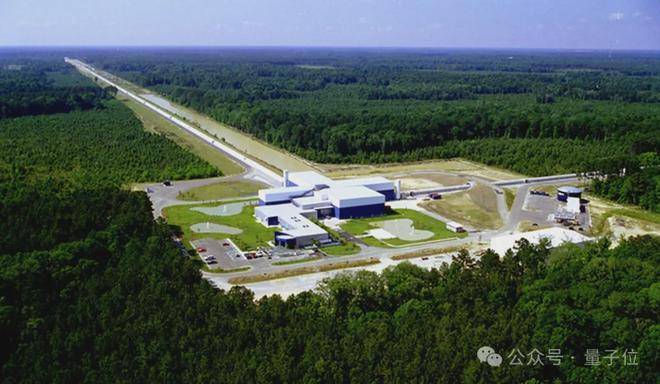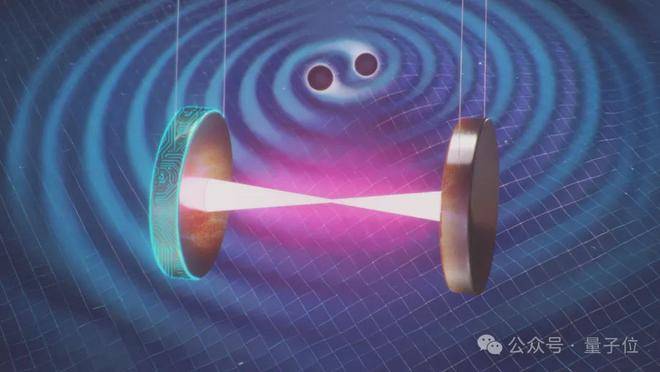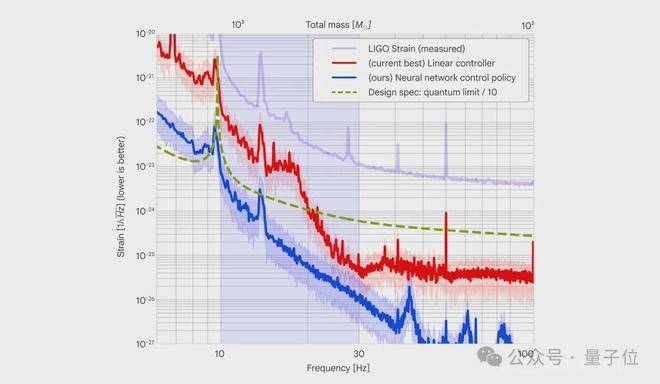Detecting the ripples in spacetime known as gravitational waves from deep within the universe has now seen the application of AI.
The Deep Loop Shaping technology developed in collaboration by Google DeepMind, the LIGO (Laser Interferometer Gravitational-Wave Observatory) team, and GSSI (Gran Sasso Science Institute) has significantly enhanced the low-frequency noise reduction capabilities of gravitational wave detection.
This research has now been published in Science.
Professors Rainer Weiss, Kip Stephen Thorne, and Barry Clark Barish of the LIGO team previously won the Nobel Prize in Physics in 2017 for their detection of gravitational waves using the LIGO detectors.
However, the field of gravitational wave detection has struggled with low-frequency noise issues for many years.
With the introduction of AI, the control noise intensity in the 10-30Hz frequency band has been reduced to 1/30 of what traditional methods achieve, with some sub-frequencies compressed to 1/100 of their original strength, surpassing the design goals set by quantum limits.
First, it is essential to clarify that gravitational wave detection is a top challenge in the field of astronomy.
Gravitational waves are disturbances in spacetime generated by the collisions of black holes and neutron stars, and the signals are extremely faint.
For instance, even the merger of two black holes causes spacetime deformations that are much smaller than atomic nuclei by the time they reach Earth.
To capture such tiny signals, LIGO was specifically built with a laser interferometer that spans 2.5 miles (approximately 4 kilometers).

△Image Source: Google DeepMind (same below)
Initially, LIGO resembles a large letter L, with two vacuum tubes at each end equipped with ultra-smooth mirrors. It splits a laser beam into two halves, directing them into the two tubes. When the laser hits the mirrors, it reflects back, and the two reflected beams eventually combine and hit the same detector.
Under normal circumstances, the two tubes are of equal length, and the laser beams travel the same distance and reflect at the same time, resulting in the beams canceling each other out (which can be understood as wave peaks aligning with wave peaks and troughs with troughs), so the detector sees no light signal.
However, if a gravitational wave passes by, it will stretch and compress the spacetime it traverses, potentially elongating one tube while shortening the other. This results in different distances for the two tubes, preventing perfect cancellation of the reflected light, allowing the detector to observe a varying signal.
From this signal, scientists can infer whether a gravitational wave has just passed.

Nevertheless, detection has been consistently limited by noise interference, especially in the low-frequency range of 10-30Hz.
This low-frequency band is irreplaceable for astronomical research. It is crucial for observing the mergers of intermediate-mass black holes (ranging from hundreds to tens of thousands of solar masses), the long-term orbital processes of binary black holes, and providing early warnings for neutron star mergers.
However, traditional noise reduction methods have long reached their limits. Scientists have previously attempted various solutions such as optimizing detector structures and shielding against environmental interference, but they have not been able to reduce low-frequency noise to a level that does not affect signal identification, a bottleneck that has plagued the field for years.
Now, Deep Loop Shaping has achieved a breakthrough through AI technology.

The core of the Deep Loop Shaping technology is not to directly search for gravitational waves but to use reinforcement learning methods to manage noise, reconstructing LIGO’s feedback control system.
The research team first built a digital twin of LIGO, simulating various interference factors such as earthquakes, ocean waves, and temperature drift—essentially the noise. They utilized a reward mechanism to allow the AI to learn through trial and error over hundreds of billions of iterations, training an algorithm that optimizes the detector’s feedback loop.

In the past, LIGO used linear control methods for noise reduction, which easily amplified noise in the low-frequency range. In contrast, Deep Loop Shaping employs deep neural networks to directly process the vast data streams collected by the detector, extracting the optimal path for gravitational wave features from the raw sensor signals, ensuring that the controller itself does not become a noise source.
Additionally, the system utilizes a recurrent neural network architecture, capable of dynamically identifying microsecond-level environmental disturbances and quickly making adjustments, while also optimizing the outputs of thousands of sensors within the vacuum tubes, further reducing background noise.
Using Deep Loop Shaping technology, at the LIGO Livingston Observatory and the 40-meter prototype at Caltech, AI has directly compressed the control noise in the 10-30Hz frequency band to 1/30 of what traditional methods achieve, with some sub-frequencies even reduced to 1/100, marking the first time this frequency band’s control noise has fallen below quantum noise, breaking through the design goals previously inspired by quantum limits.

Moreover, it has expanded the effective observation range of the detector, extending LIGO’s effective observational range from 130 million light-years to 170 million light-years, increasing the observable volume of the universe by 70%, meaning that the number of detectable gravitational wave events per year has significantly increased.
For instance, in the GW240312 black hole collision event in March 2024, the Deep Loop Shaping technology successfully identified faint signals with amplitudes 15% lower than traditional thresholds.
Co-author of the study, Professor Jan Harms, stated that the new technology can provide earlier warnings for impending cosmic collisions.
On September 14, 2015, LIGO successfully detected gravitational waves for the first time, confirming Einstein’s prediction made 100 years ago based on general relativity: that massive celestial bodies can compress and stretch spacetime due to accelerated motion.
The three outstanding contributors to the LIGO project, Professors Rainer Weiss, Kip Stephen Thorne, and Barry Clark Barish, were awarded the Nobel Prize in Physics in 2017 for their work.
△ From left to right: Rainer Weiss, Kip Stephen Thorne, Barry Clark Barish
Unexpectedly, Professor Weiss, who has made such outstanding contributions, was expelled from school during his student years due to a romantic relationship.
Born in Germany in 1932, Weiss entered MIT (Massachusetts Institute of Technology) to study electrical engineering in 1950.
During the summer of his sophomore year at MIT, Weiss’s long-distance girlfriend broke up with him, prompting him to leave Cambridge and travel to Chicago to salvage the relationship.
When he returned to MIT months later, he found that he had been expelled due to excessive absences.
Later, Weiss found a technician job in physicist Jerrold Zacharias’s research group without completing his degree.
Encouraged by Professor Zacharias, Weiss returned to MIT to finish his studies, earning a bachelor’s degree in 1955 and a PhD in 1962 under Professor Zacharias’s research group. He then went on to Princeton University for postdoctoral research, exploring whether gravitational waves could be detected from seismic signals.
Later, Weiss led the LIGO team that observed gravitational waves on September 14, 2015, and officially announced it in February 2016, culminating in the Nobel Prize in 2017.
However, just a few days before the upcoming tenth anniversary of the first gravitational wave detection, on August 25, 2025, the oldest of the Nobel laureates, Professor Weiss, passed away at the age of 93.
When gravitational waves were first detected, he remarked:返回搜狐,查看更多

